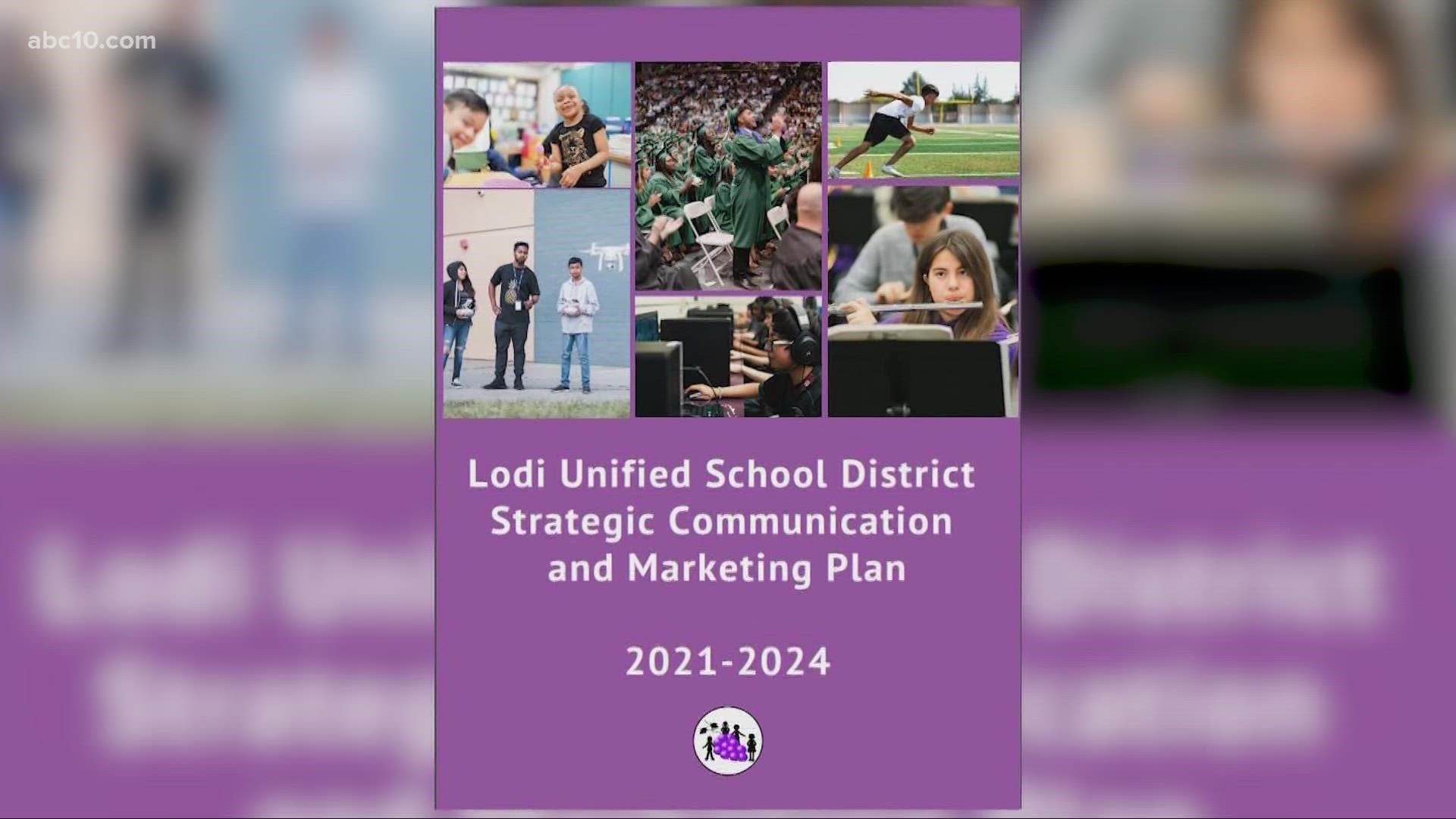LODI, Calif. — The Lodi Unified School District is welcoming more than 28,000 students back to school this academic year. That includes about 300 students remotely. The school district serves a diverse group of students in Lodi, Stockton, and surrounding county areas.
Despite the ongoing COVID-19 pandemic, the district is on a mission to provide the best education for all students to be successful in life. That involves improving communication.
During a Board of Education meeting on July 13, board members voted to unanimously approve a new 2021-2024 Strategic Communication Plan. The purpose is to present a clear and concise framework for engaging and communicating with both external and internal stakeholders. The estimated total cost for the plan is $120,000, which includes the school district’s budget for webmaster and rebranding.
"Communication is crucial to everything that we do at Lodi Unified," said Chelsea Vongehr, Public Information Officer at Lodi Unified School District. "We solicited feedback from our community back in 2019. Based on that feedback, we developed a plan that has four approaches to how we will strengthen and improve our communication with families and the public. It's important for our community to understand what we're doing on a daily basis. Whether that be email, paper form, our website, mobile app, or text message, we will communicate with families by means that will be most helpful to them.”
Global Strategy Group, a public relations and research company, partnered with The Education Trust-West -- an organization that works for educational justice for all students in California -- to explore some of the top issues parents want public schools to address during the COVID-19 pandemic and beyond. Together, the groups conducted an online survey among 800 parents of children in California public schools from October 1, 2020, to October 7, 2020.
Based on the statewide survey results, parents want schools to ensure communication with families is accessible and frequent. According to the survey, 93% of parents said it would be helpful if schools stayed in regular contact with families to ensure students and parents remain connected to the school community. But, only 48% of parents said they had regular contact with school personnel to ensure connectedness.
A lack of reliable internet access is also a top concern, particularly for parents with lower incomes and Latinx parents. In addition to providing internet access, 92% of parents of color said they would like their schools to lend mobile technology devices, like iPads or laptops, to each child. The survey showed 88% of parents of color also said that providing free internet access would be helpful.
"We're looking at our schools on a site-by-site basis," said Robert Sahli, Assistant Superintendent of Curriculum, Instruction, and Assessment at Lodi Unified School District. "We've provided hotspots to any of those students that might have needed them; however, all students across the board have received Chromebooks to take home."
Lodi Unified received more than $162 million in state and federal funding. The school district is using the funds, in part, to address COVID-19 safety, digital equity, as well as other ways to support the district's most vulnerable students.
"There's also funding earmarked for Social and Emotional - SEL - type of needs, such as mental health services, to help all students and staff," said Sahli.
Based on the latest demographics, Lodi Unified has about 45% Hispanic or Latinx students, 19% White students, 18% Asian American students, and 6% Black students. The district also serves about 3% Filipino students and 2% students listed under two or more races. English Learners (EL) comprise 19% of the district's school-age population with Spanish, Hmong, Urdu, Cambodian, and Vietnamese as the most commonly spoken non-English languages. Currently, the eligible socio-economically disadvantaged student percentage stands at 68% districtwide, exceeding the statewide rate of 60%.
"We're doing our best to meet the needs of every student, especially students who suffered the most through the COVID-19 pandemic," said Sahli. "It can vary from site to site. Some of our low-income area schools were certainly impacted by the pandemic. Even though some other schools are not in a low-income area, there still might be some students at those schools in need of support services."
Continue the conversation with Kandace on Facebook.

